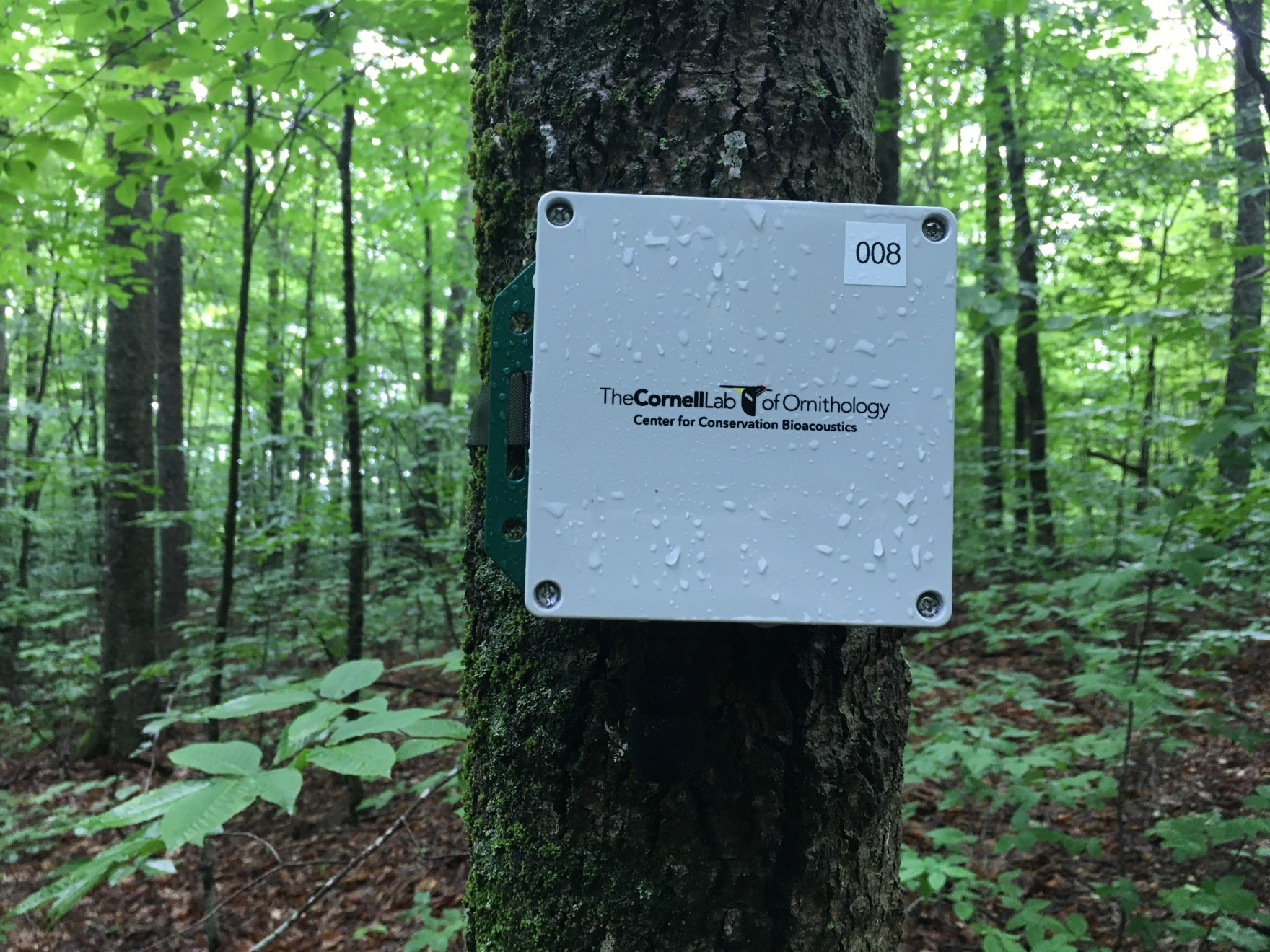‘The Beating Heart Of The Park’s Ecosystems’: How Bioacoustics Are Teaching Land Managers About Songbirds In Woodstock

An acoustic recorder mounted to a tree. The microphone protrudes from the bottom. (Anna Van Dine/VPR)
Close your eyes for a second. Listen. What do you hear? Do you notice the hum of a refrigerator? Are cars driving by? Kids yelling and playing?
This is a soundscape. The sonic environment created by — and creating — the place where you are.
“Our soundscape tells us a few things right away,” says Laurel Symes, who studies bioacoustics at Cornell University. Bioacoustics is the science of listening to a natural environment to learn more about how that environment might be changing.
Maybe your soundscape tells you that it’s summer, gives you an idea of the weather and time of day, a sense of where you are.
“If you practice listening to natural sounds, it can tell us at least as much about what’s going on there with nature,” says Symes, who’s the assistant director of the K. Lisa Yang Center for Conservation Bioacoustics at the Cornell Lab of Ornithology.
And that’s what researchers started doing at Marsh Billings Rockefeller National Historical Park in Woodstock this year.
